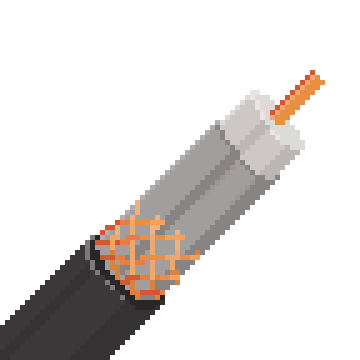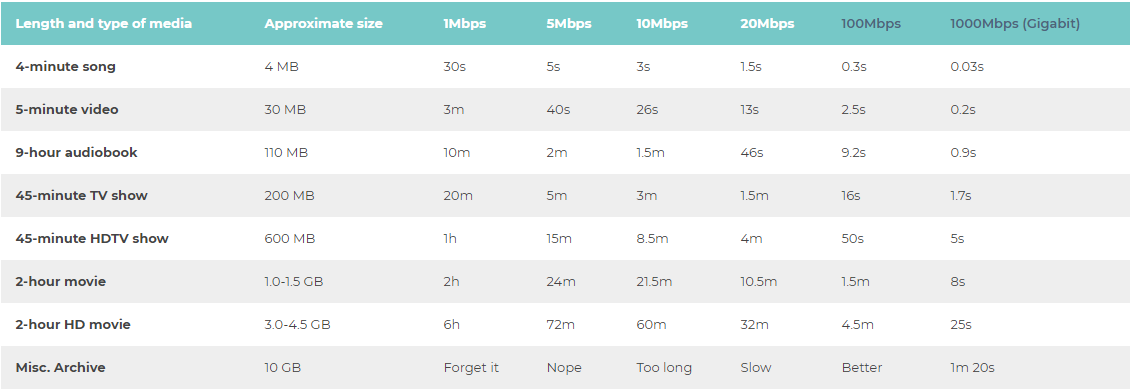
Fiber Internet
As technology advances our way of living and operating adjust. Scientists and inventors throughout the ages have been developing fiber optics as early as 2500 B.C. when the Romans wove glass into fibers. Now in the 21st century, we have obtained the ability to acquire internet that’s nearly the speed of light. In the years to come, Fiber Optics will be standardized. In this article we’ll show you why.

What makes up a cable?
The first thing you need to know is how fiber optics differ physically from internet copper cabling. Copper is what composes the core to a traditional internet cable. Aluminum insulation wraps around the core. A copper shield is weaved around the aluminum insulation. Finally the last layer being a plastic outer coating.

Glass is what comprises the core of a Fiber Optic cable. Wrapped around the core is a fiber cladding which is no wider than the diameter of a strand of human hair. Next is the coating, then the strengthening member, and finally the outer jacket.

Information passes through these strands as light allowing for faster speeds over greater distances.
How do they function differently?
1. Cable internet is more readily accessible to the public. There are numerous internet service providers (ISPs) and phone companies who offer internet services already and because of this, it’s cheaper. While fiber optic is more expensive than cable internet the market for it is growing. This means there will be more competitors and competing prices in the future.
2. For traditional cabling the size of the cable directly relates to the speed of internet you receive. Bigger cables means having to need more room for all that cabling. The size of a fiber cable is not related to the speed of internet you receive from it. This makes it easier for technicians to install and needing less room to fit cables.
3. Cable internet can provide 10-500mBps for download speed and a 5-50mBps upload speed range. However, fiber can provide 250-1000mBps in both directions. This allows for multiple people to be on the network at the peak usage time without experiencing performance issues.
Source:Fastmetrics
4. Although cable internet does not interfere with your television, you may have to share the connection with your neighbors. This results in a decrease in internet performance during peak usage times. Fiber optic’s performance is not disrupted by peak usage times due to its fast megabit-per-second speeds and it’s ability to not be affected by distance, unlike copper cables.
5. Traditional cable is affected by electricity outages since they’re made of copper and conduct electricity. This can be an issue in the case of businesses, home offices, and possible emergencies if you use WiFi calling. Fiber optic internet is less likely to go down during a power outage. Since it is made of glass it does not conduct electricity which allows it to be submerged in water and can withstand more temperature fluctuations than copper cabling. This protects it against interference from nearby power lines or high voltage electrical equipment, reducing the risk of fire.
6. Copper cabling can be easily tapped for malicious attacks since it gives off electro-magnetic radiation. Your online information will be accessible and decoded for the attacker. Fiber optic is more secure than copper cabling because of its unique glass core. This results in fewer DDoS attacks, MITM interceptions, and tapping of the line.
MITM attacks can be where someone intercepts the communication line between the router and the computer, eavesdropping, and can then access and record your data activity.
A DDoS attack can cause an internet traffic surge. DDoS attacks disrupt the normal traffic flow and result in the loss of internet for an amount of time.
Future of Fiber Internet
Fiber Optics are being installed across many major metropolitan areas throughout the United States. This is particularly common in Major Texas’ cities where CellTeks is located. We are even seeing some rural cites receiving Fiber Optics installed. Whenever you see trenching along with big spools of cable, chances are they may be installing Fiber Internet. Google along with several other telecom companies are leading this charge to bring Fiber Internet to everybody. Soon Fiber Optics has the potential to be the standard for internet access.
Why is this important?
Internet speeds are often significant to businesses of all kinds who rely on them in order to be productive and efficient. From large companies of over 1000 employees to a home office with a single worker, this reliability to have good internet is vastly important. The internet also provides for a majority of our entertainment, communication, and learning. Schools are in need of good internet services as well. Often times teachers will have their lessons saved in a cloud storage and students may need to fill out an online worksheet at school or at home.
Not only is fiber looking like the better option for faster internet speeds it also has a handful of new safety features. Each option for your internet has its pros and cons. Traditional internet cabling is cheaper and more readily available while fiber optic cabling is currently more expensive, but comes with many benefits. Only you can decide what your needs are and hopefully, this article will help you choose how you want your internet in the future.





